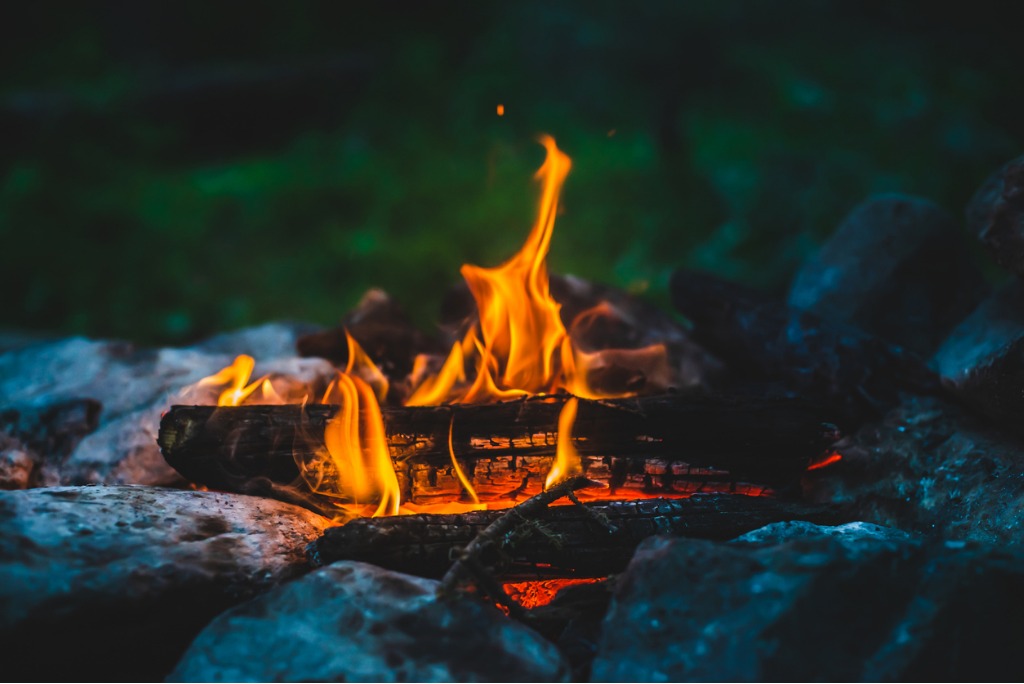Photo by anatoliy_gleb via iStock
Campfire safety is an important topic to discuss whenever you’ll be out exploring the beauty of the world around you. But as wildfires increase in size, number, and frequency, being responsible with your fires is all the more critical.
Though there are many areas with strict fire restrictions, many other regions allow fires and simply ask that you make smart decisions with them.
One of the best things about being out in the wilderness is to sit around the campfire roasting marshmallows, having a good drink, telling stories with your buddies, and being awed by the blanket of stars in the sky.
With these campfire safety tips, you’ll learn a few things that will help you and your fellow overlanders enjoy a great campfire while also minimizing worry that it will get out of control.
Campfire Safety Tips: Check Fire Restrictions First
Photo by JohnnyH5 via iStock
The first order of business is to determine if fires are even allowed. This is not a situation in which you can play dumb and assume that fires are permitted!
Before you head out on your trip, check with local field offices for the Bureau of Land Management, the National Forest Service, National Parks, and so forth to see if fires are allowed. The last thing you want to do is build a fire and have it turn into a wildfire that destroys property, endangers animals, and endangers human lives.
The environment is something we all share, and it is the responsibility of each of us to do our part to be safe and give others the chance to enjoy it as well. This is the most basic fire safety tip of all!
Select the Ideal Spot for a Campfire
Photo by ferrantraite via iStock
Once you’re sure fires are allowed, the next thing you need to do is consider where you’ll build your fire.
If you’re in a maintained campsite, this step is easy – use the fire ring. Some dispersed camping spots have man made fire rings made of rock as well.
Here’s a campfire safety tip: If you have to build your own fire pit, you need to first know if digging is allowed. There are archaeological wonders all over public lands, so digging isn’t always permitted. What’s more, there could be concerns about erosion or disruption to plant life, so it’s a good plan to check before you dig.
Photo by ninjaMonkeyStudio via iStock
If digging is okay, you want to position the dig site at least 15-20 feet away from any trees or plant growth, as well as your tent, trailer, vehicle, and so forth. If need be, clear the surrounding area of leaves, pine needles, downed branches, and other flammable materials. Pick an area that is level as well.
You also want to select a site that provides some measure of protection from the wind. Though you don’t want to build a fire directly under a stand of trees, building a fire on the opposite side of trees from the prevailing wind is a good idea.
Above all, if you’re in an area that does not have a burn ban, but is extremely dry, windy, or both, do not build a fire! Using common sense is one of the best campfire safety tips!
Learn More:
Getting Things Ready
Photo by daniilphotos via iStock
Dig the fire pit about 12 inches deep and about 24-36 inches wide. Find large rocks to ring the fire pit, that way the fire can be contained.
Once you’ve built the fire pit, you’ll want to collect wood and fire starting materials. Leaves, pine cones and pine needles, and dry grass are great tinder.
Whatever you do, do not store your fire materials near the fire. Keep them at least 10 feet away to prevent an ember from setting the material ablaze.
To add an extra measure of safety, keep your shovel nearby so you can throw dirt on any embers that escape the pit. Also have water on hand to quickly douse the flames if need be.
Campfire Safety Tips: Building, Maintaining, and Putting Out the Fire
Photo by Alikaj2582 via iStock
The next step in the process is to arrange the fire-making materials to get the fire started.
Pile the tinder in the middle of the fire pit. On top of that, add kindling (small sticks) in a criss-cross fashion. Light the tinder and kindling, adding more tinder as the fire grows. Once you have a good flame going, add more kindling and fuel (large pieces of wood) to keep the fire going.
Add more fuel to the fire as it begins to decrease in size, bearing in mind that the fire should never get too big. It’s not a bonfire you’re after here, but a small, manageable fire that you can easily control.
Ideally, you’ll let the fire burn itself out so there is nothing left but ashes. However, if you’re ready to go to bed or otherwise leave the fire pit area, douse the flames with water, being sure to completely cover all unburnt wood and embers. Use your shovel to rotate unburnt wood so you can thoroughly soak it on all sides.
Photo by Sara Giacalone via iStock
Putting out the fire means that there is nothing that is too hot to the touch left in the fire pit. If it is still emitting heat, you cannot leave it alone. If need be, use your shovel to scrape burning embers off of sticks and logs and douse them again in the fire pit.
If you’re leaving the site permanently, add a layer of dirt on top of the soaked fire pit as another means of protection.
These steps are all quite easy, yet can make all the difference in the world when it comes to fire safety. Use these tips to build, maintain, and extinguish your next overlanding fire in a responsible manner.




